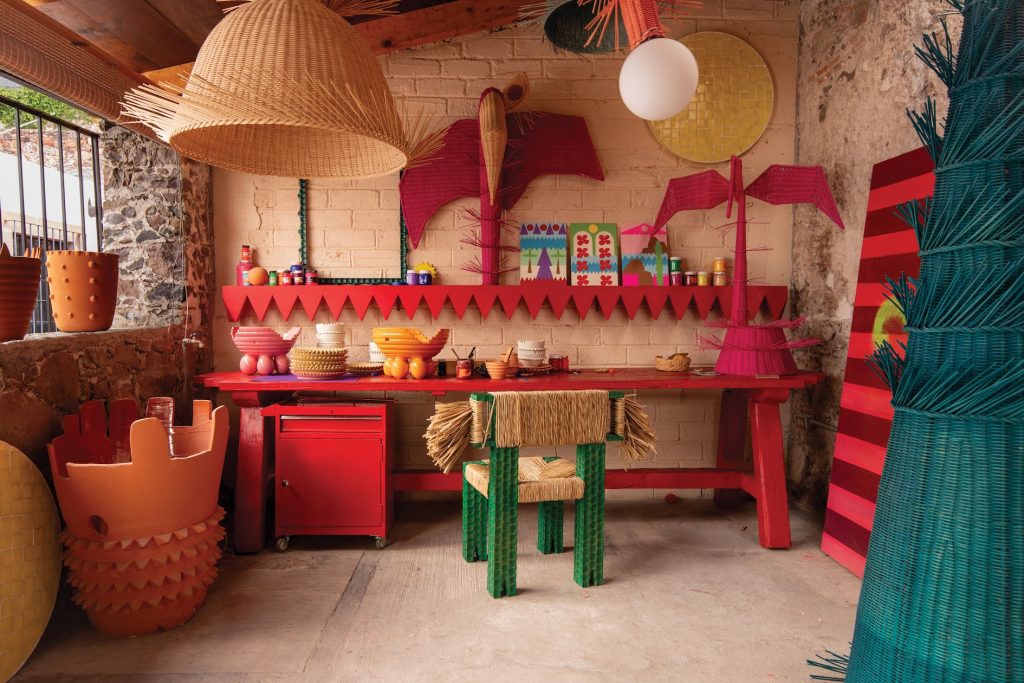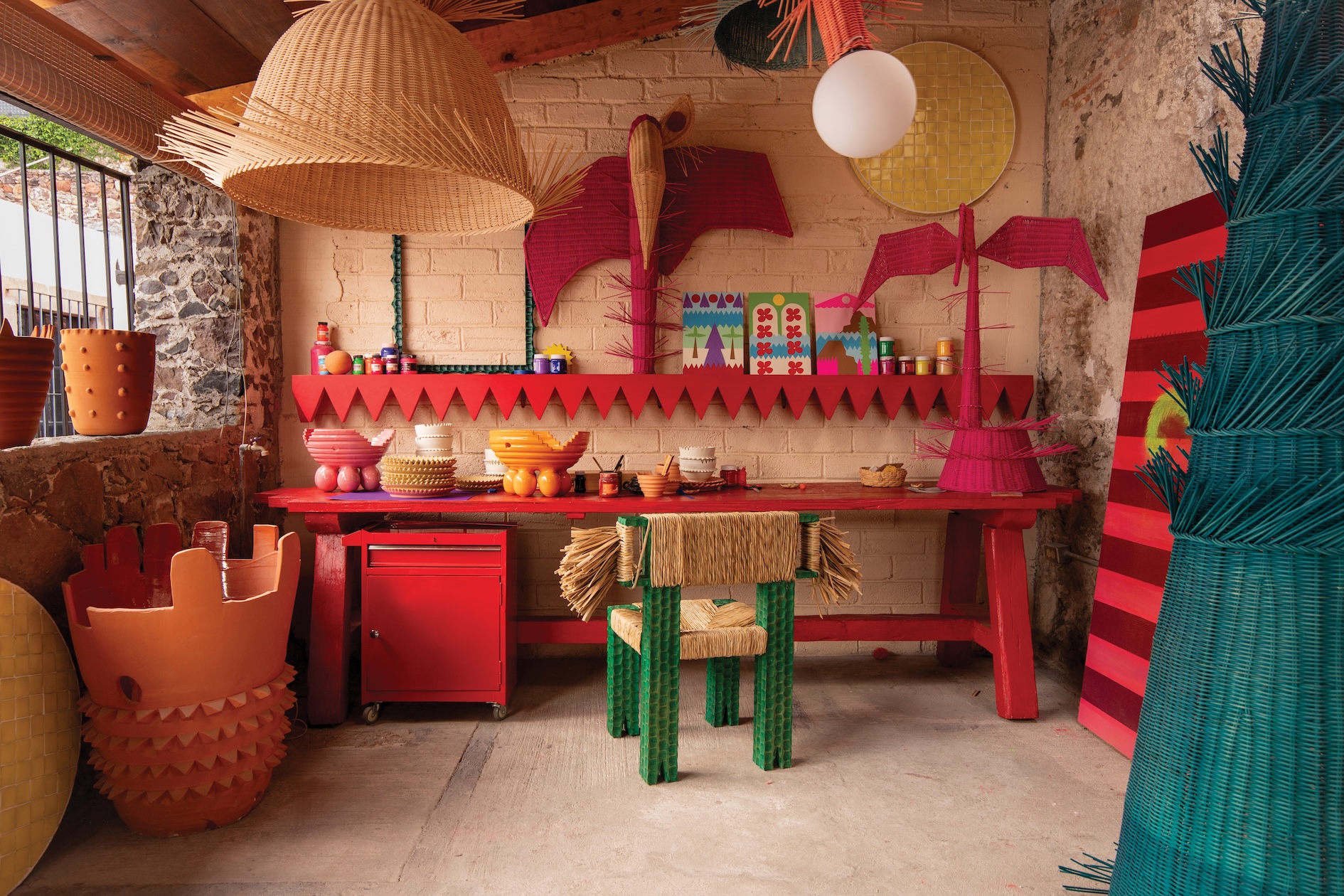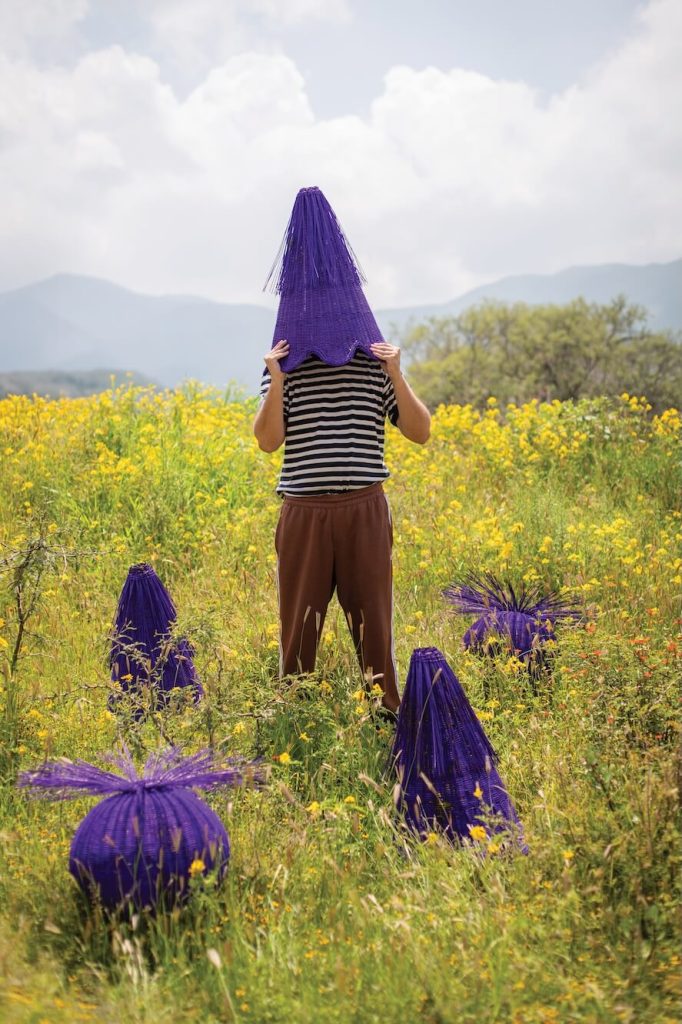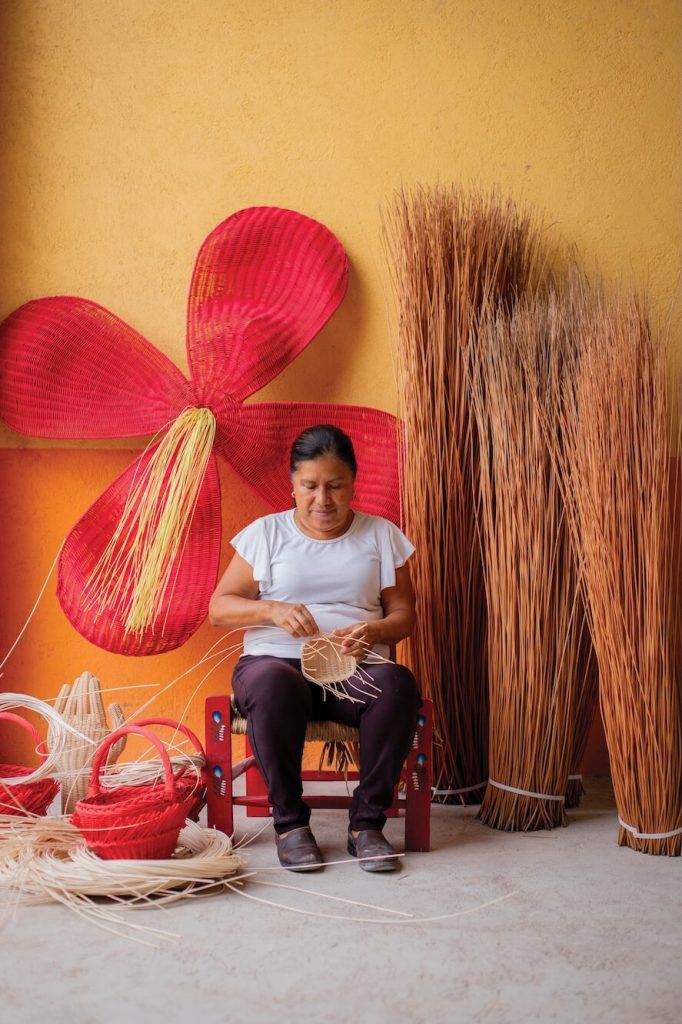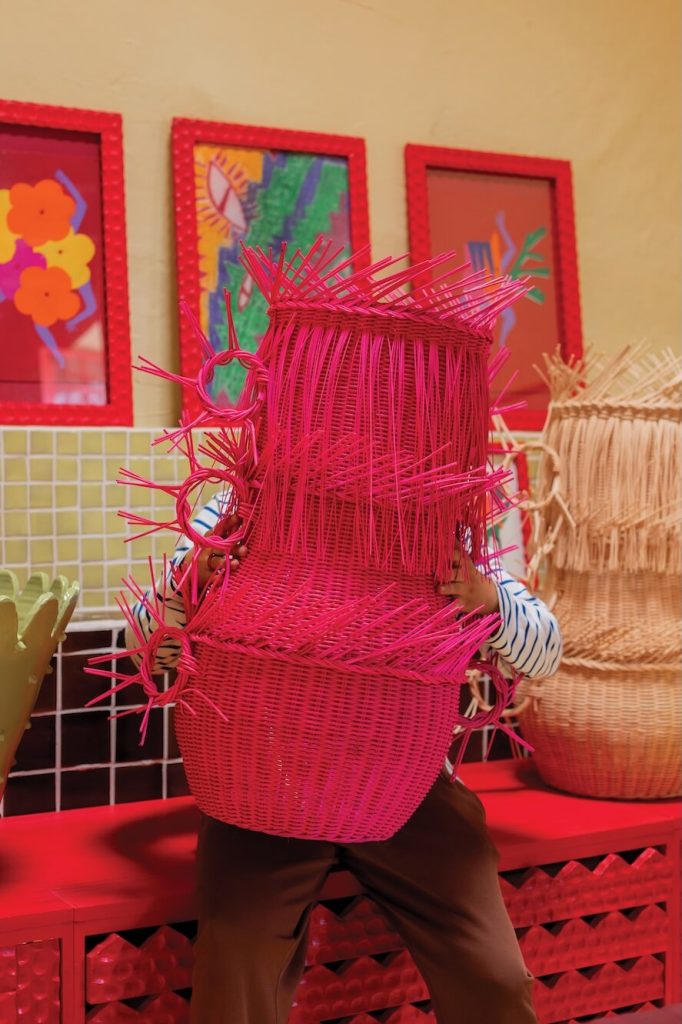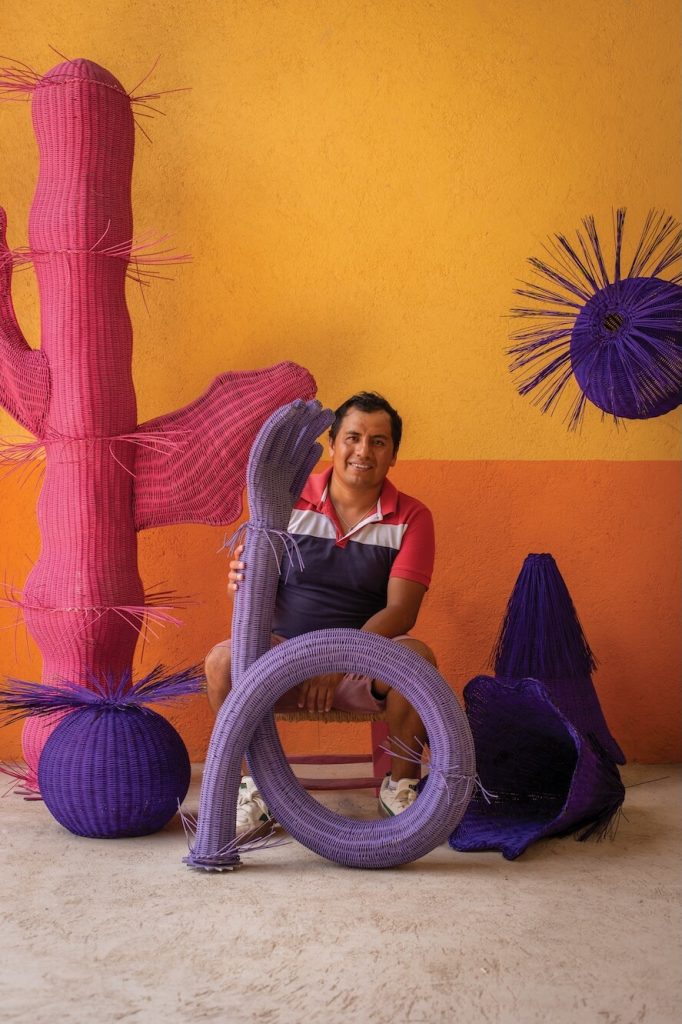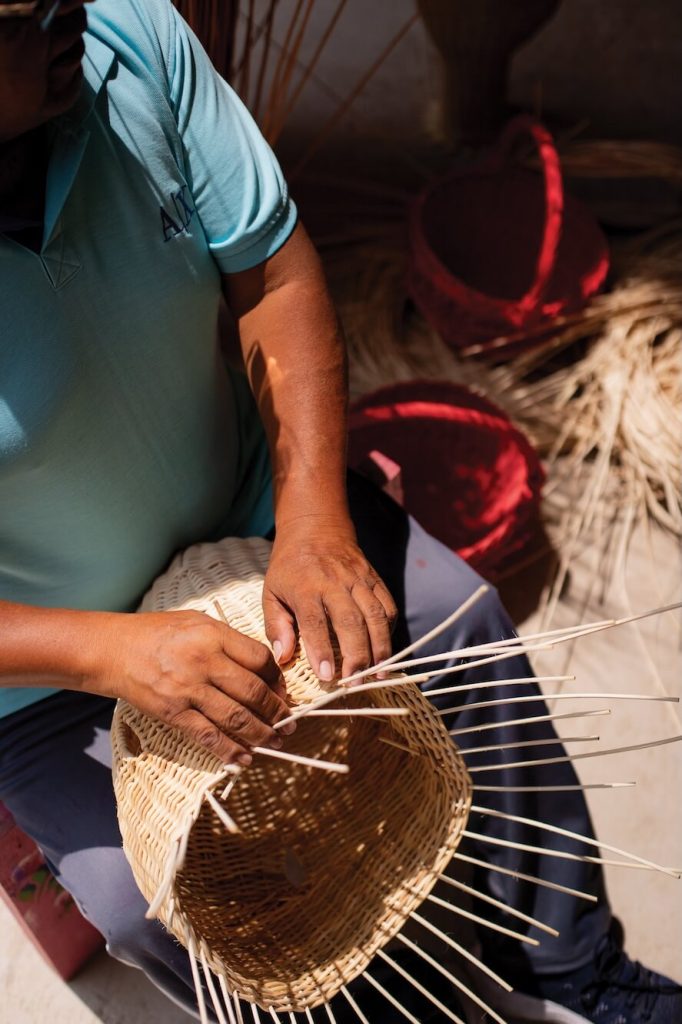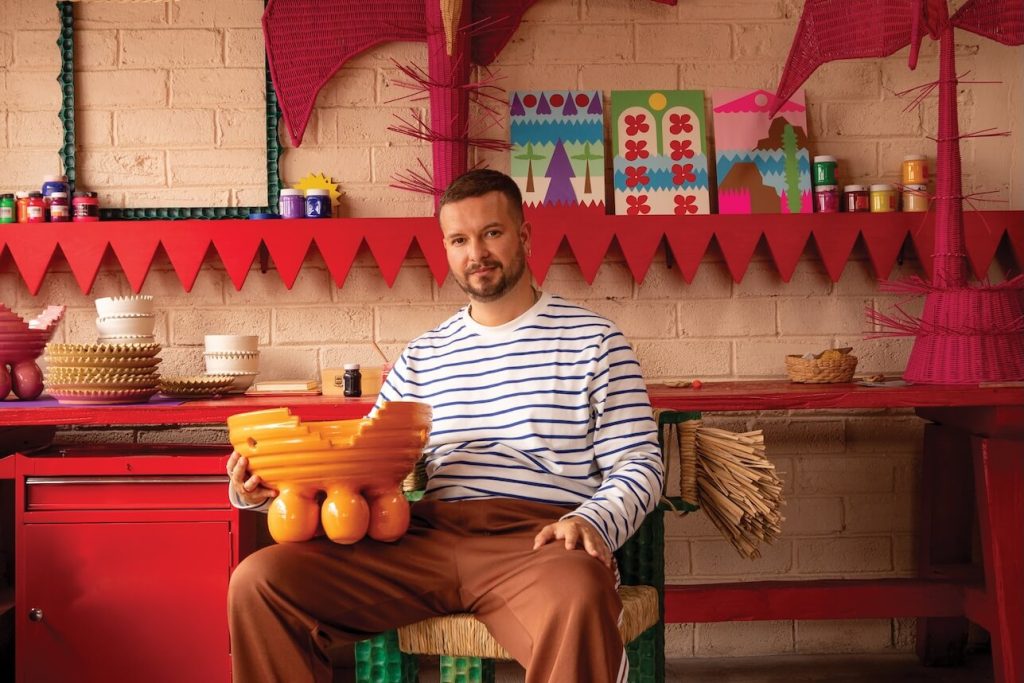
Daniel Valero, founder of the colorful, imaginative, and disruptive creative studio, Mestiz, was learning to make sarapes from a pair of brothers who were steeped in the indigenous weaving practice when his perception of what art is shifted.
He noticed how the source of water used to create the shawl’s dyes dictated the quality of its brilliant coloring. And how the specific lines or zigzag patterns spoke in symbols of the prevailing politics and religion of the moment.

This led Valero on a creative journey, exploring indigenous crafts—basket weavers handy with wicker in Tequisquiapan; potters in Dolores Hidalgo, known for its rich soil; woodworkers who etched the ornate doors around San Miguel de Allende. In 2015, he established Mestiz as a platform for Mexican craftspeople to apply their techniques in exciting and artistic new ways.
His wildly vibrant designs have more recently caught the attention of global brands, like Hermès, which commissioned Valero to create fantastical scenes for the windows of all five of its Mexico stores earlier this year. And Tequila brand Casa Dragones tapped the creative studio to imagine an elaborate experiential installation at New York’s “Mexico Week: Día De Muertos at Rockefeller Center.”
At the heart of every project is a narrative. Valero and his team of artisans from across central Mexico are telling stories of ancient seeds flowering in a wild postmodern world.

The pieces—textiles, ceramics, and furniture—are imbued with the personality of their birthplaces, the old-world pueblos where they’re fashioned and the bohemian artist colony where Valero is based.
With Valero’s vision like a kaleidoscope, the age-old techniques and materials explode into radical colors and textures that enchant a space and beckon a viewer in close. Oversized lampshades made in hot-pink wicker coiled like snakes. Tables are carved with thumbprint-groove legs and petaled aprons. Plateware and pots are spiked and serrated and spiraled.

Talk to Valero for any length of time, and it becomes clear magic and wonder appear as a throughline in his career. Items hold spiritual heft. Towns are cast as fairy tale settings. Life is guided by serendipitous turns.
Born in Saltillo, Mexico, where he would later study sarapes with Héctor y Rubén Tamayo, Valero, 35, settled in San Miguel de Allende, a small colonial-era city 170 miles from Mexico City, after a stretch of artistic soul-searching.
He had earned a degree in architecture but felt the work left his hands too clean and his creativity confined in concepts. Later, with a scholarship from the governments of Mexico and France, he studied textile design in Paris.“As an art and design student, you always feel like you have to be in a big city or a capital to be known and to get connections. But I decided that I wanted to decentralize that. I wanted to create from somewhere else and to have that place be known for great quality.”

The worn cobblestone streets and color-blocked buildings of San Miguel de Allende have long attracted artists and expats, along with creative-minded Mexicans seeking refuge in a post-pandemic world from the urban sprawl of the capital. For Valero, being surrounded by nature and a more bucolic culture close at hand has been invigorating.
“You have traditions that are more alive,” he says. “There are a lot of fireworks, a lot of parties in the street, a lot of parades. You are completely immersed in the routine of a community that is connected with traditions and symbols.”
His studio and showroom, a Wonka-esque fun house stuffed with his creations, is tucked in a backstreet of the city’s lively downtown. Valero spends much of his workday, however, on the highway, driving through the hills of the Mexican lowlands to check in with his workshops.
“The highway is becoming a very important time for me to think and to be alone and connect with my creative process.”

That process is rooted in deep and far-reaching relationships with the artisans he has partnered with for years. At first, he takes time to observe the craftspeople in their well-worn cadences, before stepping in with his own ideas.
“We are always moving from small-scale to big-scale and more experimental,” he says.
Many of his pieces today are made custom for clients and galleries or sold online, like a series of candy-colored tapestries of fish with the geometric striping of a sarape.

An upcoming project for Auberge Resorts Collection, “Flores Del Mar,” will tell a story of uncontrolled nature through holiday installations. Inspired by the seas and vibrant florals at three of Auberge’s Mexico properties, hanging, tangling floral lamps made of wicker will take over public spaces at Chileno Bay in Los Cabos, Susurros del Corazón in Punta de Mita, and Etéreo in Riviera Maya, each creation completely unique with a distinct color scheme pulled from the surroundings.
“It’s kind of like nature is eating the space,” Valero says.
Inspiration for the scenes came as he explored the grounds of each resort and studied their gardens, clipping flowers like the ruby red blossom of the Tabachín tree at Susurros del Corazón. His hope is that the pieces will recast the spaces in a spellbinding light.
